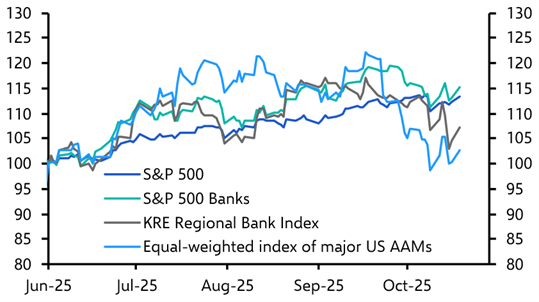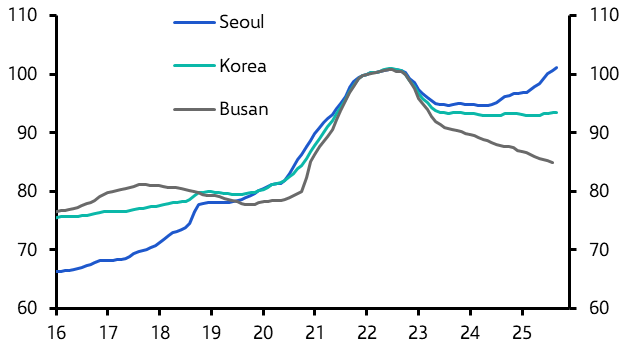The late-1990s saw a bubble in equity markets and the mid-2000s saw a bubble in housing. Today many see a bubble in government bonds. Indeed, for some, this is the biggest bubble of all – and one that has been 30 years in the making.
At face value, it’s not hard to believe the idea that bonds may be in a bubble. After all, yields on government debt have fallen steadily since the early 1980s. (See Chart 1.) 10-year US Treasuries are now trading at a yield of just 1.50% or so, while the yields on most 10-year government bonds in Europe are either negative, testing all-time lows, or both. The flip-side of this drop in yields has been a relentless rise in bond prices. Yet despite all of the talk of bubbles the drop in bond yields (and the corresponding rise in bond prices) has been largely justified by economic conditions.
Chart 1: 10-year US Treasury Yields (%)

The nominal yield of a government bond boils down to two things: expectations for short-term real policy rates over the life of the bond and expectations for inflation. These feed off one another, and both have fallen sharply over the past 30 years.
Some of the initial decline in nominal yields in the 1980s reflected the unwinding of deliberately tight monetary policy, particularly in the US. In the early 1980s, the Fed kept its real policy rate high in order to stamp out the rapid inflation of the 1970s. As this began to bear fruit, the Fed was able to loosen its policy stance, which helped fuel the initial rally in government bonds.
However, much of the decline in yields over the past 30 years has been due to structural forces. The advent of inflation targeting by independent central banks lowered and then anchored inflation expectations. This process was later helped by the spread of globalisation.
More importantly, there has been a steady but significant fall in equilibrium real interest rates over the past couple of decades. (After all, real interest rates have fallen over this time without the corresponding rise in inflation that would surely have followed had the equilibrium rate been unchanged.)
The factors that have pulled down the equilibrium real rate can be split into two categories: those that have increased the desire to save and those that have decreased the desire to invest. So, for example, ageing populations in the developed world and greater caution by policymakers in the emerging world in the wake of financial crises in the late-90s have both increased desired savings. Meanwhile, a fall in the cost of capital goods, the growing importance of the service sector (which is less capital intensive than manufacturing) and a reduction in the potential rate of (real) GDP growth in advanced economies have decreased desired investment.
Of course, some of these structural factors may not last. In particular, a consensus in favour of looser fiscal policy could both reduce desired savings and increase desired investment – thus pushing up both real and nominal interest rates and bond yields. But while we wouldn’t rule this out, there’s not much evidence of it happening imminently.
The key point, then, is that the trend decline in bond yields over the past couple of decades has been justified and is thus difficult to label a “bubble”. The more interesting question – at least over the coming quarters – is whether the decline in yields over the past couple of months is justified. The answer depends to a large extent on your view of the immediate prospects for the world economy.
We’ve argued for a while that the outlook for global growth was worse than most anticipated. To this end, at the start of this year we forecast a drop in developed market bond yields over the course of 2019. But the market moves over the summer mean that the scale of interest rate cuts that is now priced into bond markets – particularly in the US – has only previously been experienced in times of recession. This raises the possibility that the structural fall in bond yields over the past couple of decades is justified, but that the bond market may have got ahead of itself with regard to the next 6-12 months. Yet all of this hinges on just how bad the immediate outlook for growth is and whether the world’s major economies can avoid recession. This is a subject to which I’ll return in next week’s note.
In case you missed it:
- Our Chief UK Economist, Paul Dales, argues that the chances of a “no deal” Brexit are high and rising…
- …and our Chief Europe Economist, Andrew Kenningham, thinks Germany’s economy is more vulnerable to a “no deal” outcome than it was at the start of the year.
- Our Latin America team takes stock of a tumultuous week in Argentina and outlines what’s likely to come next.




